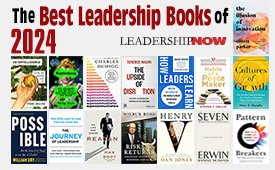 |
 |
11.17.25

The Participation Revolution: Turning Customers into Co-Creators and Co-Producers
THE new hyper-digital age will see a significant shift towards participation branding in what some regard as the Participation Age. As consumers increasingly rely on one another for feedback and input on what and where to buy products and services, the best brands invite consumers to participate in brand-building. This participation could involve a range of actions, from co-creation of product design to customer-led innovation efforts, user-generated ads and promotions, and people-powered influencer marketing programs. Notably, each of these actions has the potential to positively influence customer engagement. The participation branding approach co-creates value with customers to effectively deliver greater value.
The Lego Legacy Participation branding can serve as a vehicle for researching customers’ needs and requirements. It enhances customers’ identification with the brand, as user-designed products provide a sense of empowerment for those involved in the co-creation process.. Participation branding can enhance consumers’ willingness to pay by evoking feelings of accomplishment and a sense of contribution to the production process. One example of a brand that effectively practices participation branding is Lego. The Lego Group works to enliven children’s creativity through play and learning. Their mission is to inspire and develop the builders of tomorrow. The brand’s plastic construction bricks are among the world’s most iconic playthings. Today, Lego provides toys, experiences, and teaching materials for children in more than 140 countries. The brand is now more than just a toy manufacturer; it has been widely recognized as a cultural phenomenon, evidenced by its toys’ broad representation in publications, television, and film, along with artistic and cultural works. Interestingly, Lego is continually seeking ideas for TV shows, digital videos, and toy sets—all essential for helping the company introduce new products and, consequently, enhance its revenues. For instance, Lego enables people to share their imaginings on a new platform called the ‘Lego World Builder.’ It allows users to propose story worlds, characters, and other ideas by uploading concept art, videos, and descriptions. The Lego Group receives thousands of creative individuals with original ideas for new content and stories each year. Lego World Builder has enabled the company to accelerate the sourcing and development of entire franchises instead of just individual toy sets. AI and Participation Branding Participation branding can progress from lower levels of getting customer input, to fostering deeper customer engagement, to co-creation of content and products, to a final stage where the customer becomes fully integrated into the production of all aspects of a brand. AI can enable various tasks involved in participation branding. It can facilitate this process in specific ways as customers engage in co-creating advertising or product development with a brand. A key factor in selecting customer participation activities is testing new product and campaign ideas that arise from customer input and co-creation opportunities. To achieve this, AI can help generate synthetic personas and A/B testing simulations based on customer input and feedback. Marketers could leverage AI-assisted product co-creation to develop new products or campaigns (e.g., Lego Ideas meets ChatGPT). Current AI tools such as Perplexity AI, Notion AI, ChatGPT for idea generation, Loop11, and Maze (UX testing) can help implement these ideas. In conclusion, participation branding is a crucial pillar of success in the hyper-digital age. It offers significant promise for brands seeking to strengthen their engagement with customers. Vanitha Swaminathan is the Thomas Marshall Professor of Marketing and Director, Center for Branding at the University of Pittsburgh School of Business. Her research focuses on branding strategy and the conditions that foster consumer-brand relationships, as well as how firms can successfully design brand strategies—such as co-branding, brand extensions, brand acquisitions, marketing alliances— to strengthen customer loyalty and firm up stock market performance. Currently, her attention is on understanding how brand managers can leverage the power of technologies such as Augmented and Virtual Reality and Ai to deliver better brand experiences. She also examines how content creators and influencers can help strengthen consumer-brand relationships. She has worked on marketing and branding consulting projects with such companies as The Hershey Company, Kraft Heinz, StarKist, AC Nielsen, GlaxoSmithKline, and Procter & Gamble, and has advised small businesses regarding their digital marketing efforts. In light of her many scholarly and service contributions, the American Marketing Association named her an AMA Fellow in 2024. In 2025, she won the University-wide award for Excellence in Doctoral Mentoring at the University of Pittsburgh. Her recent book is Hyper-Digital Marketing: Six Pillars of Strategic Brand Marketing in an AI-Powered World (Palgrave-Macmillan). Learn more at profvanitha.com 
Posted by Michael McKinney at 01:01 PM
|
BUILD YOUR KNOWLEDGE
 

How to Do Your Start-Up Right STRAIGHT TALK FOR START-UPS 
Grow Your Leadership Skills NEW AND UPCOMING LEADERSHIP BOOKS 
Leadership Minute BITE-SIZE CONCEPTS YOU CAN CHEW ON 
Classic Leadership Books BOOKS TO READ BEFORE YOU LEAD |